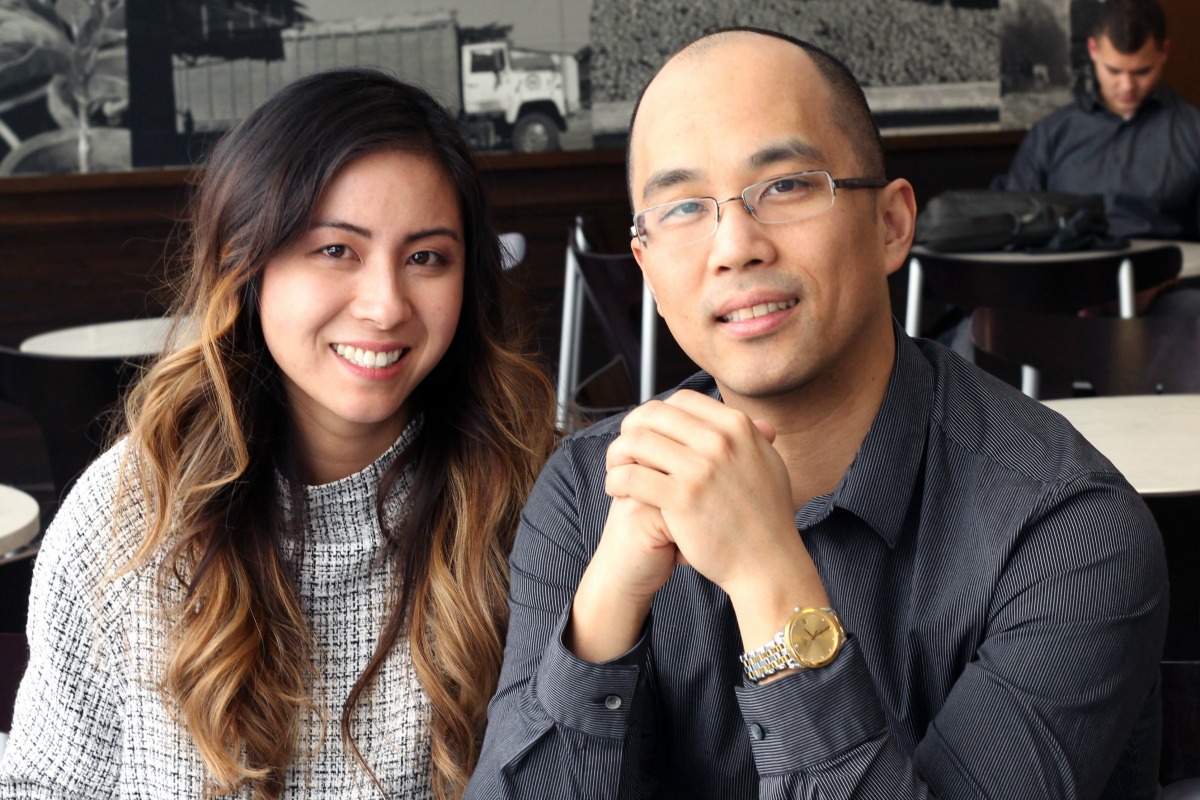Tech leaders and educators around the world are pushing for more computer coding to be taught in schools to better prepare students for the future. Jennifer Lam, who will receive her bachelor of education degree Wednesday at the University of Alberta’s spring convocation, has taken the message to heart and is proving that even Grade 1 students can learn to code.
Lam had a chance to draw on her computing science background during first teacher practicum when her assistant principal asked her to teach code to elementary school students at Edmonton Catholic School District’s Best Exploration of Science and Technology conference. She wasn’t sure what to expect, so she tried to keep it simple and taught the kids to program a simple Star Wars game that they could share and play with friends. She said she was blown away by how adept such young students proved to be.
“I was amazed,” said Lam. “It just made me realize that there is so much opportunity for teaching and learning.”
From there, she started getting requests from teachers to visit their classes and teach programming. By the end of her two field placements, she had taught more than 500 elementary school students the basics of coding.
“Because we are so technologically advanced, it’s like magic to kids,” she said. “We need to pull them back and show them that it has taken steps to get where we are.”
That means explaining the basics of technology to students. One thing Lam does in the classroom is ask students where they think Wi-Fi comes from as a way to gauge their understanding.
“I get the most hilarious answers,” said Lam. “‘Does it come from the sun?’ From there we talk about wireless routers and try to break down that mystique around technology.”
Sharing a passion for programming
Not only did teachers at Lam’s field experience schools recognize the value in her initiative, but other parents and teachers have told her that they want more resources for teaching programming. The challenge is they don’t know where to find them. Janelle McFeetors, Lam’s mathematics education professor, sees her resourcefulness as a way to bridge that gap.
“While it is easy to see a sharp distinction between what pre-service teachers learn on campus in their education program and what they learn in classrooms during a student-teaching practicum, Jennifer took the initiative to integrate her learning between courses and student teaching,” said McFeetors.
“With Jennifer's enthusiasm for providing rich opportunities for mathematics learning, I am excited that she is sharing this passion with students and teachers. I see Jennifer as a thoughtful and committed future teacher who exemplifies the possibility of STEM learning in elementary school.”
Lam isn’t the only one in her family who has worked with coding in schools. Her husband, Johnny Huynh (MSc’06), was inspired to volunteer with Hour of Code, where industry professionals work in school to teach students the basics of programming. When Huynh started, he was one of only four volunteers in Edmonton, despite the demand from educators. One teacher of a special needs class told him that she’d never seen her class sit so still and be so attentive.
“The schools I did make it out to, we had a blast,” said Huynh. “The students loved it because it’s their first foray into programming. Regardless of how we spin it, kids love being in front of a screen. We just made it productive and educational without them knowing it.”
Both Lam and Huynh practice what they preach when it comes to educating youth about programming. Both test out their ideas on their two sons, aged five and seven. In one task they taught their children to program a Raspberry Pi to turn on a light. Lam and Huynh also started Discover Coding Zone which provides an after-school programs and summer camps during to teach coding.
“Technology is ubiquitous, so it falls into the background for kids and seems inaccessible,” said Huynh. “Ironically, learning about technology has never been more accessible.”
Get with the program
Want to learn how to code? Here are some tips from Faculty of Education experts:
“Some excellent educational resources are out there and freely available to teachers and parents. I recommend checking out code.org, for example. The online lessons are fun, current and easy to set up. Both children and adults will benefit from trying these out and gain a new understanding of what is meant by “coding’.”
–– Cathy Adams, Associate Chair Graduate, Secondary Education
“Don’t be afraid to ask for help. There’s a lot of trial and error when it comes to coding, and asking someone else for advice, whether online or in person, can make a huge difference.”
–– Christine Gamble, Web and Communications Coordinator, Technologies in Education
“If you're really stuck trying to get a piece of code to work, try to think of the simplest test possible. Grab a pencil and paper, and 'execute' your code by hand, step-by-step. A quick search on Stack Overflow might be quicker, though!”
–– Kevin Gordon, Web Content Developer, Elementary and Secondary Education
“A fun introduction to coding can be facilitated by visual programming environments that are freely available online, such as Scratch or Code Academy. For instance, children can learn how to code their own games using Scratch, instead of just playing games. Moreover, to become innovative problem solvers in any field in the digital age, children need to learn how to think computationally beyond a programming environment.”
–– Maria Cutumisu, Assistant Professor, Educational Psychology
“It doesn’t have to be in front of a computer. We should be learning this from a young age because these problem-solving skills are so useful.”
–– Jennifer Lam
Feature image: Jennifer Lam and Johnny Huynh put their coding skills to use in local schools to teach the basics of programming.
